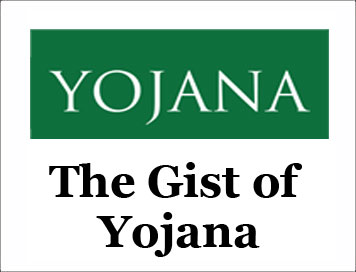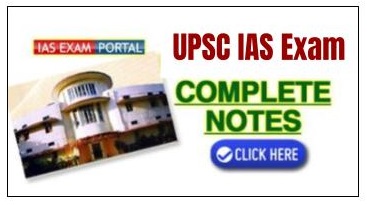(HOT) UPSC Current Affairs 2025 PDF
NEW! The Gist (NOV-2025) | E-BOOKS
(GIST OF YOJANA) Role of Middle-Class Leading in India’s Prosperity
GIST OF YOJANA : Role of Middle-Class Leading in India’s Prosperity
JULY-2025
Role of Middle-Class Leading in India’s Prosperity
Introduction:
James Bradshaw can be credited with using the term ‘Middle- Class’ for the first time in a 1745 pamphlet ‘Scheme’ to prevent Irish wools from being sent to France. Hardly would he have thought that centuries later, this nomenclature would become so relevant in economic policy management, particularly in India.
Background:
-
Today, India’s growth story is incomplete without discussing the policy roadmap and welfare measures related to the middle-class.
-
‘According to American conventional wisdom, a healthy middle-class is necessary to have a healthy political democracy. A society made up of rich and poor has no mediating group either politically or economically," he wrote in an article, titled ‘The Disappearance of the Middle-class’, and published on 05 February 1984 in the New York Times.
-
In a successful democracy and fastest-growing economy, it is important to assess the role of middle class and the initiatives taken in over a past decade. Before we go ahead, we need to find answers to two important questions—who is middle-class and what are their numbers? As of the date, there is no official definition of the middle-class.
-
However, there is a definition by the National Council of Applied Economic Research (NCAER) and the People Research on India’s Consumer Economy (PRICE), and it terms household earnings between Rs 5 lakh and Rs 30 lakh (at Fiscal Year 2020-21prices) per year as the middle-class.
KEY MEASURES TO EASE INCOME TAX COMPLIANCE FOR MIDDLE-CLASS
1. New Form 26AS: This new form contains all information of deduction or collection of tax at source specified financial transaction (SFT), payment of taxes, demand and refund, etc. Further, details of SFT data in the Form 26AS makes taxpayers aware of their transactions beforehand and encourage le disclose their true income.
2. Pre-filing of Income-tax Returns: In order to make tax compliance easier, pre-filled Income Tax Returns (ITR) have been provided to individual taxpayers. The scope of information for pre-filling inclu ts information such as salary income, bank interest, dividends, etc.
3. Updated Return: Section 139(8A) of the Income-tax Act, 1961 (the Act) facilitates the taxpayei to update his return anytime within two years from the end of the relevant assessment year so that he can file an updated return by voluntarily admitting omissions or mistakes and paying an additional tax as applicable. Further, an e-verification scheme was launched to allow taxpayers to disclose their unreported or underreported income in the updated ITR.
4. Reduction in the Corporate Tax Rate: Starting from the Finance Act, 2016, the corporate tax rates have been gradually reduced while phasing out the exemptions and incentives available to the corporate so as to increase the tax base.
5. Simplification of the Personal Income-tax: Finance Act, 2020 and Finance Act, 2024, has provided an option to individual taxpayers for paying income tax at lower slab rates if they do not avail specified exemptions and incentives.
6. Expansion of scope of TDS/TCS: To bring new taxpayers into the income tax net, the scope of TDS/TCS was expanded by including huge cash withdrawals, foreign remittances, purchases of luxury cars and other goods, e-commerce participants, sales of goods, acquisitions of immovable property, purchases of overseas tour program packages, payments on transfers of virtual digital assets, online gaming, payments to partners of a firm, etc.
Connectivity Within the Cities anti from Cities at Lower Cost
-
Commuting within cities became easier thanks to Metro Rail, which is now either running or being built in 29 cities. By May 2025, India had 1,013 km of metro lines in operation, up from just 248 km in 2014.
-
That is an addition of 763 km in just eleven years. India now ranks third globally in terms of its total metro rail network. Daily ridership, which stood at 28 lakh in 2013 to 14, has now crossed 1,12 crore.
-
The pace of commissioning new lines has grown nine times. On average, 6 km of metro lines are now operationalised every month, compared to just 0.68 km per month before 2014. The annual budget for metro rail has also increased more than six times, rising from Rs 5,798 crore in 2013-14 to Rs 34,807 crore in 2025-26.
-
At the same time, effort was made to fulfil the aspiration of middle-class to take air travel. The Ude Desk Ka Aam Nagrik (UDAN) scheme, launched on 21 October 2016,made air travel affordable and accessible for the common citizen. In its sixth year, UDAN has connected 88 airports, including 2 water aerodromes and 13 heliports, through 625 routes. The first UDAN flight took off from Shimla to Delhi on 27 April 2017. Since then, over 1.49 crore passengers have benefited from low-cost regional air travel.
-
India’s airport network has grown from 74 airports in 2014 to 160 in 2025. Rs 4,023.37 crore has been disbursed as viability gap funding to support air connectivity in underserved regions. The scheme has boosted tourism, improved access to healthcare, and spurred trade in tier 2 and tier 3 cities, driving inclusive regional development.
Conclusion:
This is just an indicative list of initiatives taken to improve the lives of the middle-class. Additional measures are currently in progress, with more being planned for the future..The government fully recognises that the realisation of Viksit Bharat by 2047 hinges significantly on the increasingly effective and seamless participation of the middle class in shaping the nation’s progress.
CLICK HERE TO DOWNLOAD FULL PDF
CLICK HERE TO DOWNLOAD UPSC E-BOOKS
Study Material for UPSC General Studies Pre Cum Mains
Get The Gist 1 Year Subscription Online
Click Here to Download More Free Sample Material
<<Go Back To Main Page
Courtesy: Yojana



